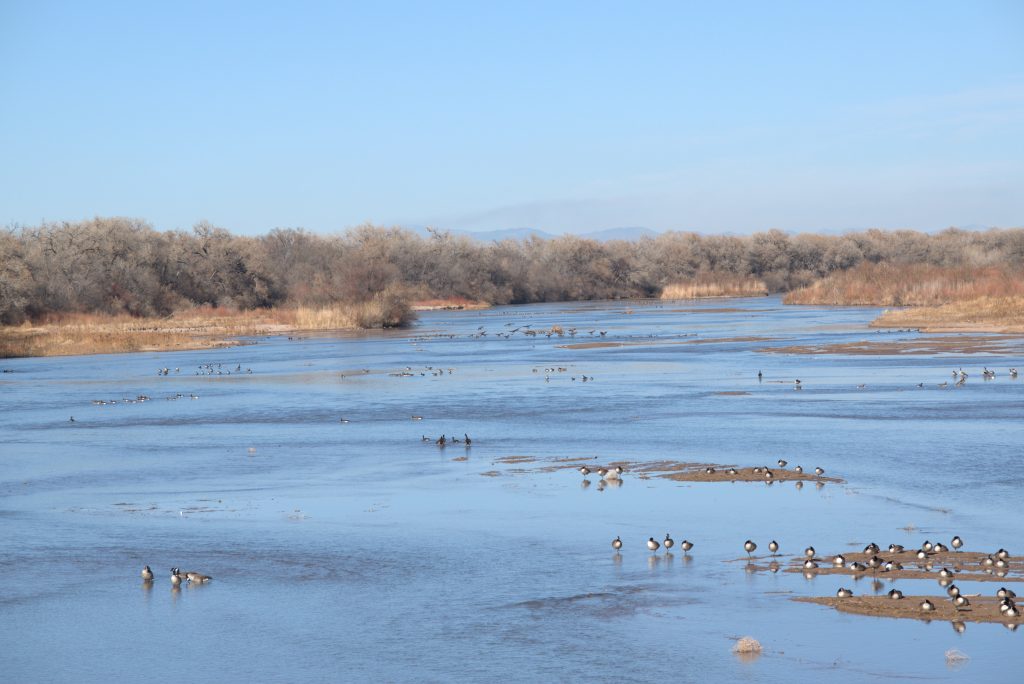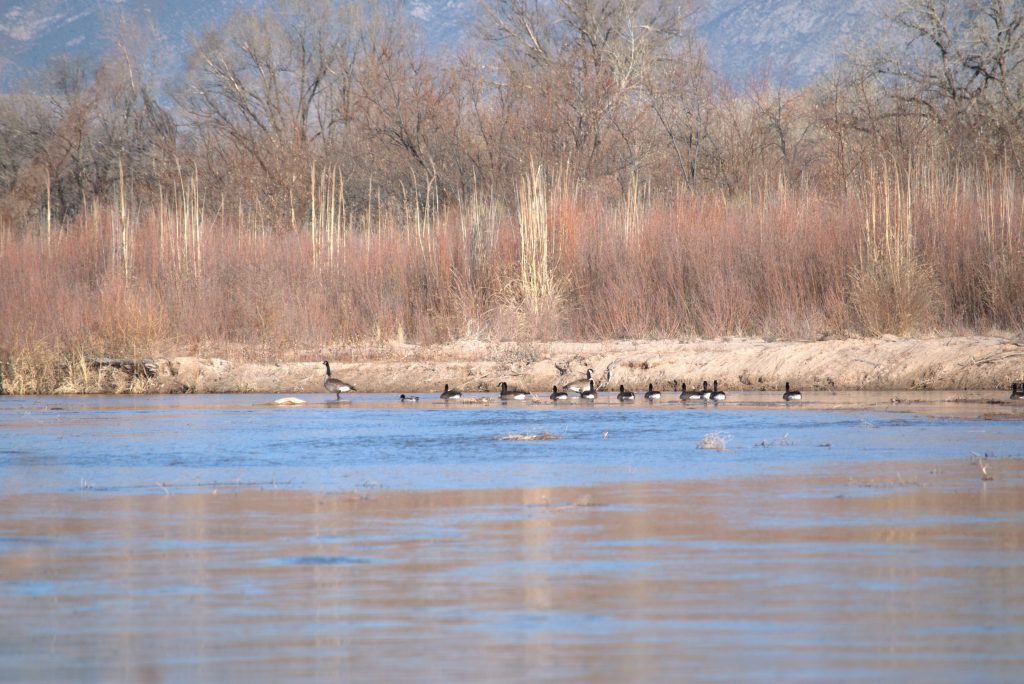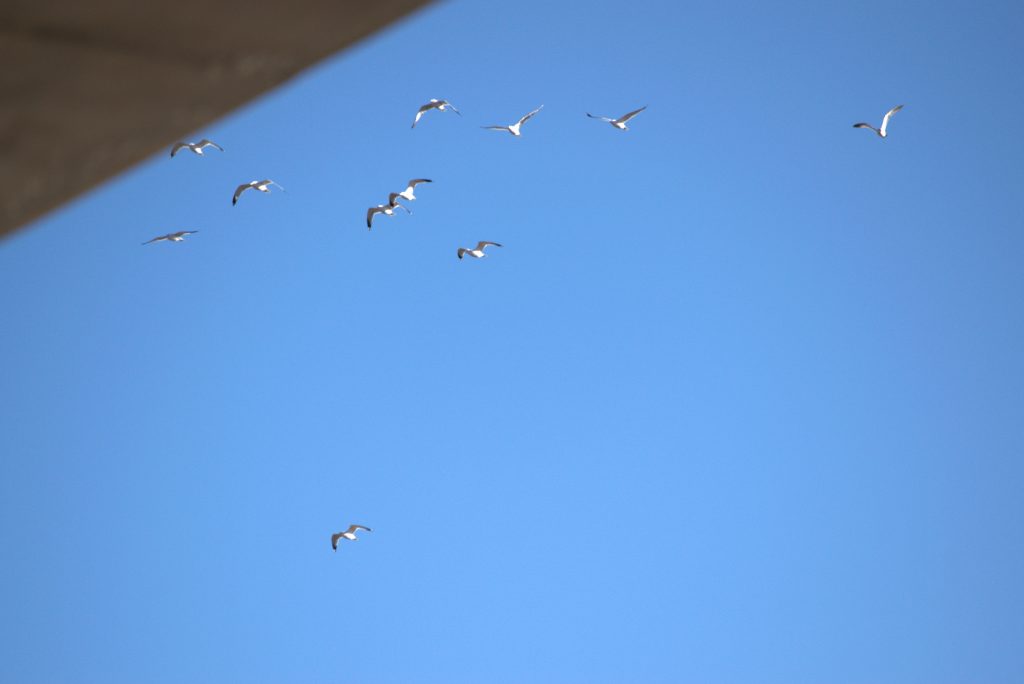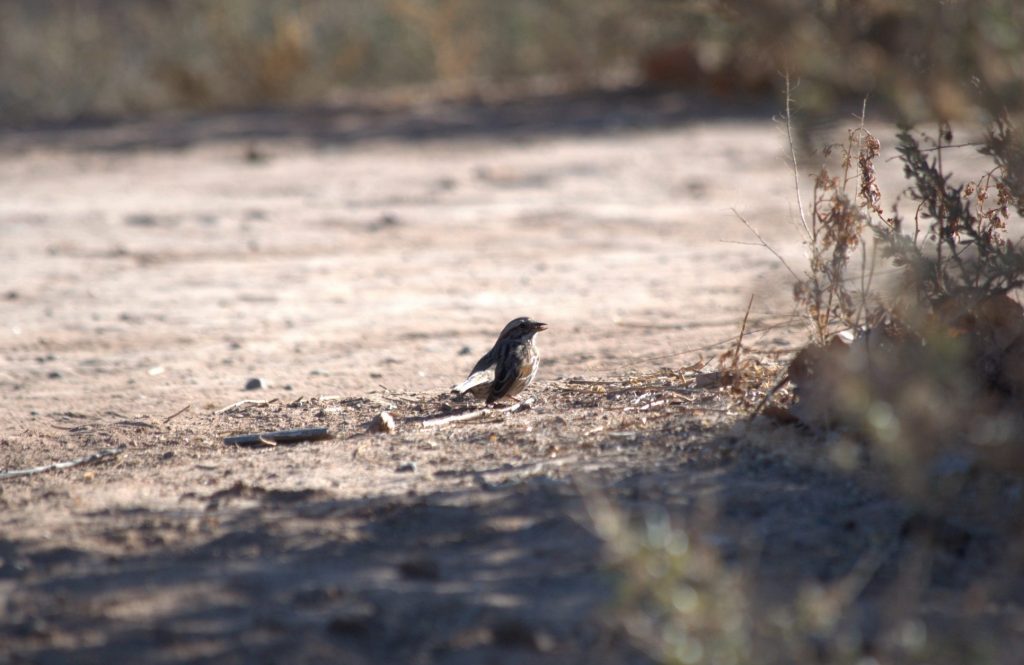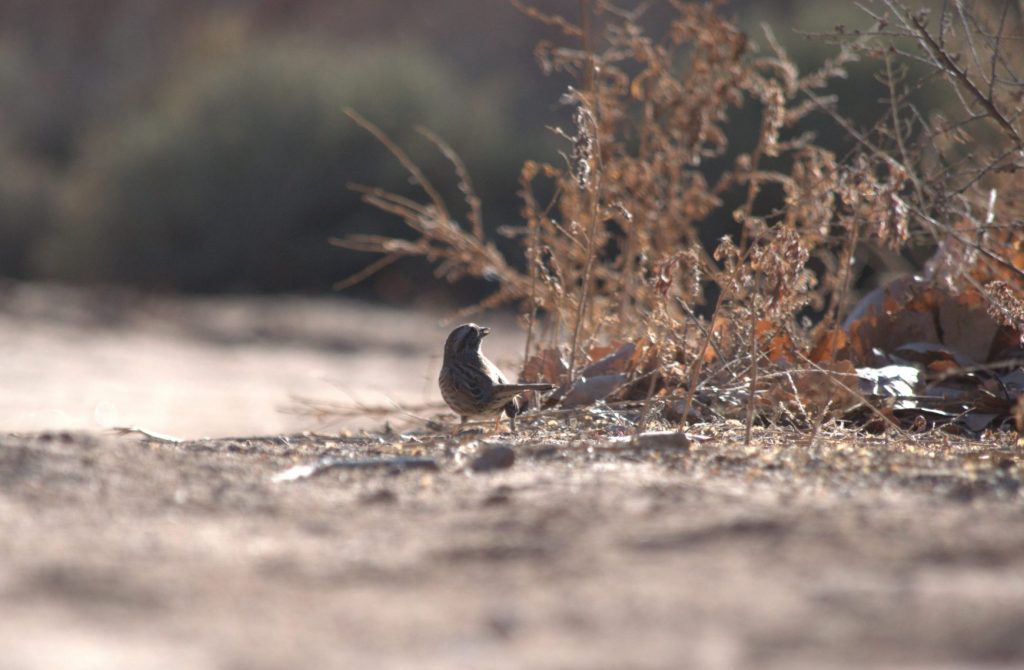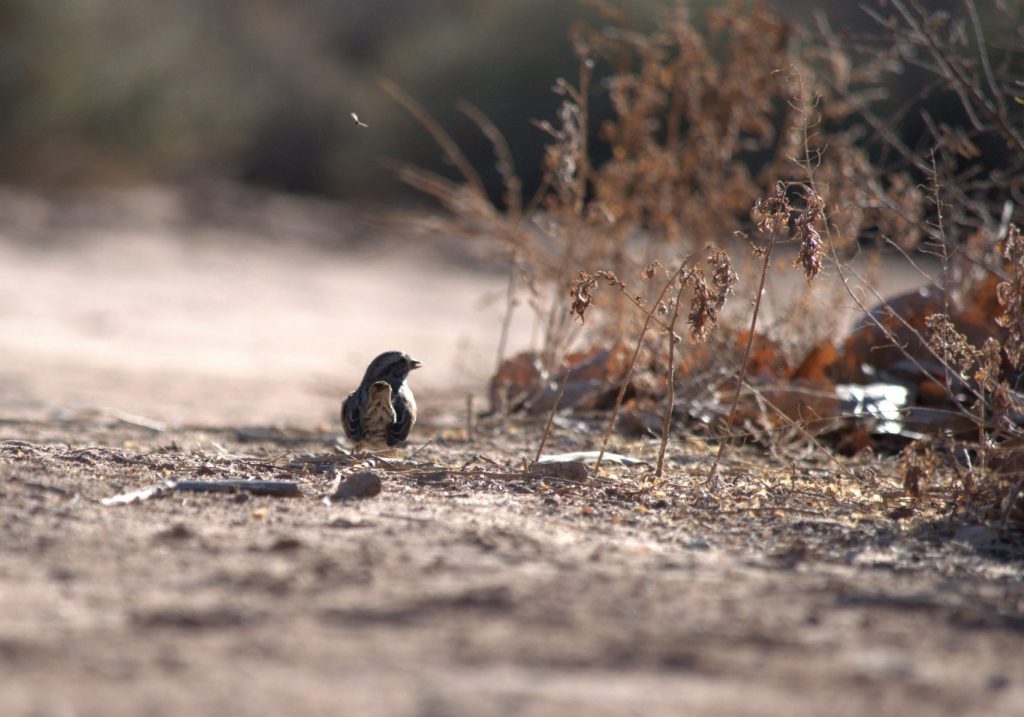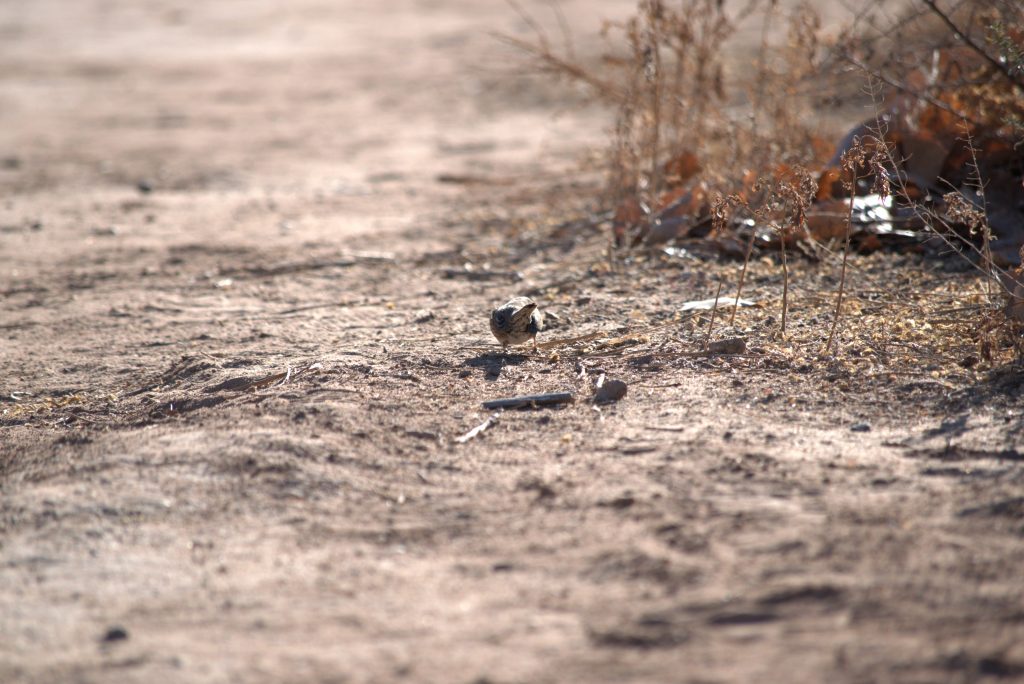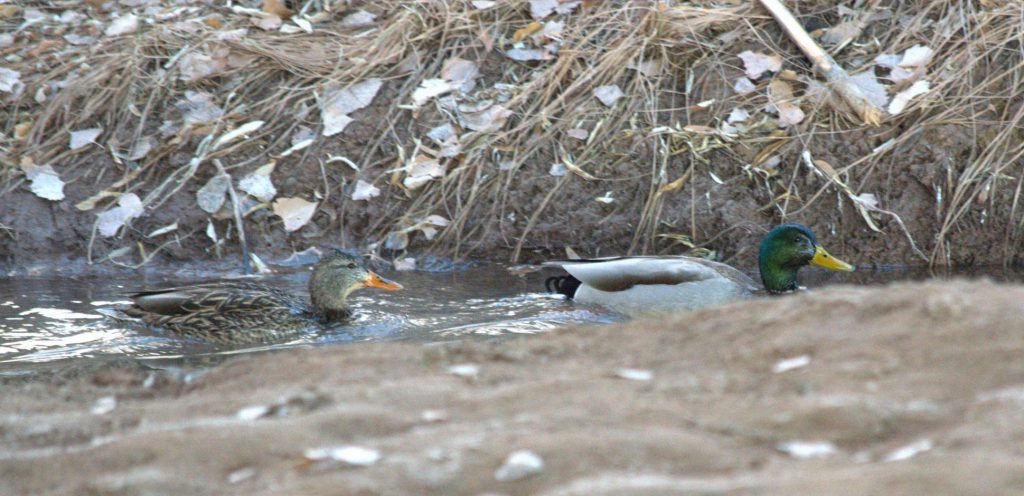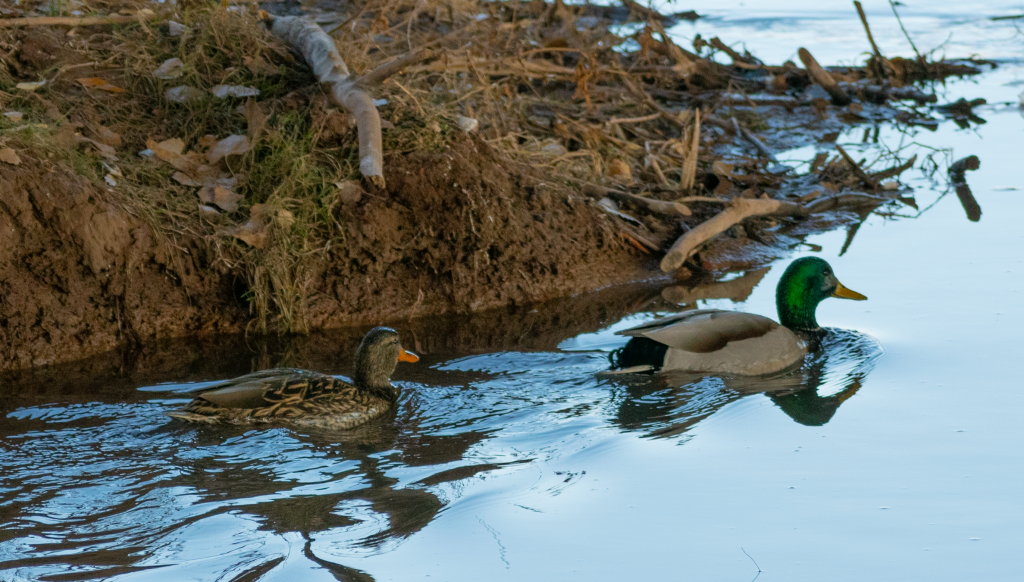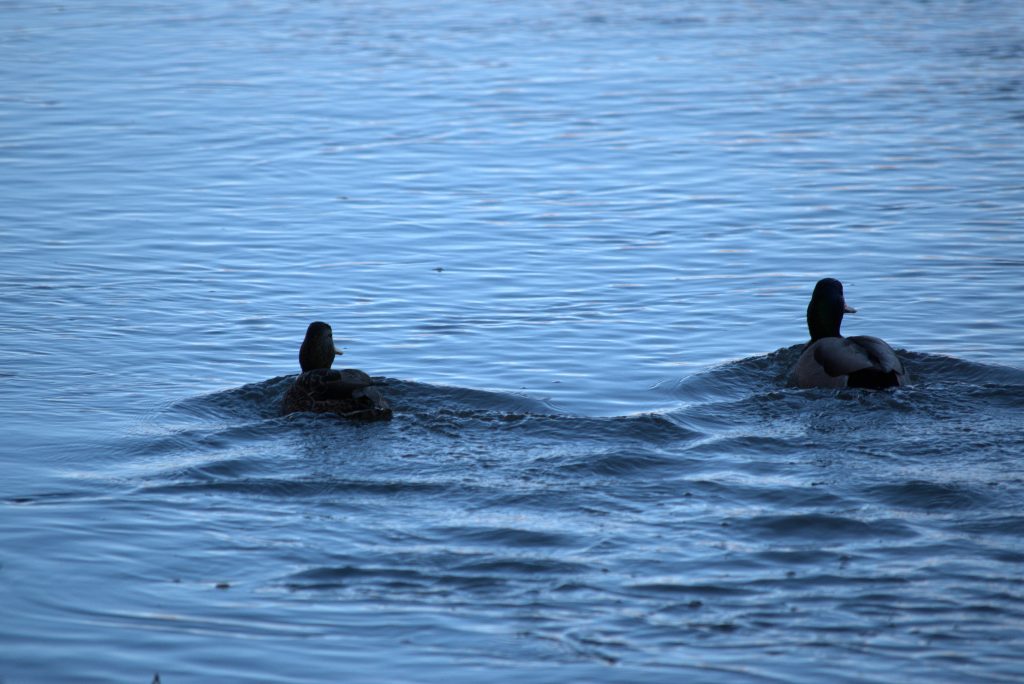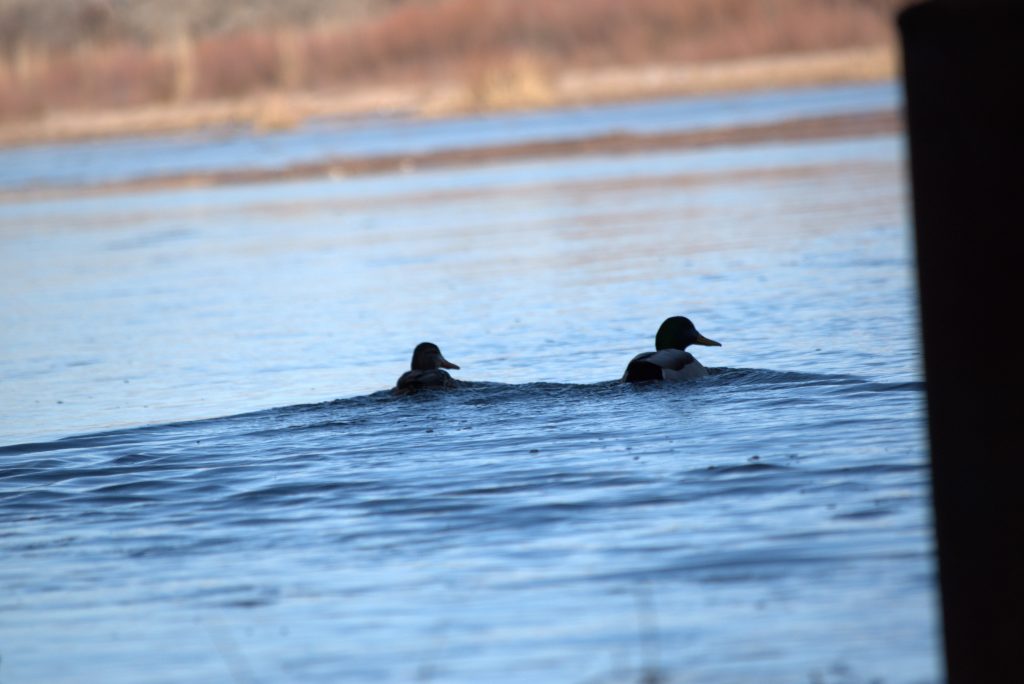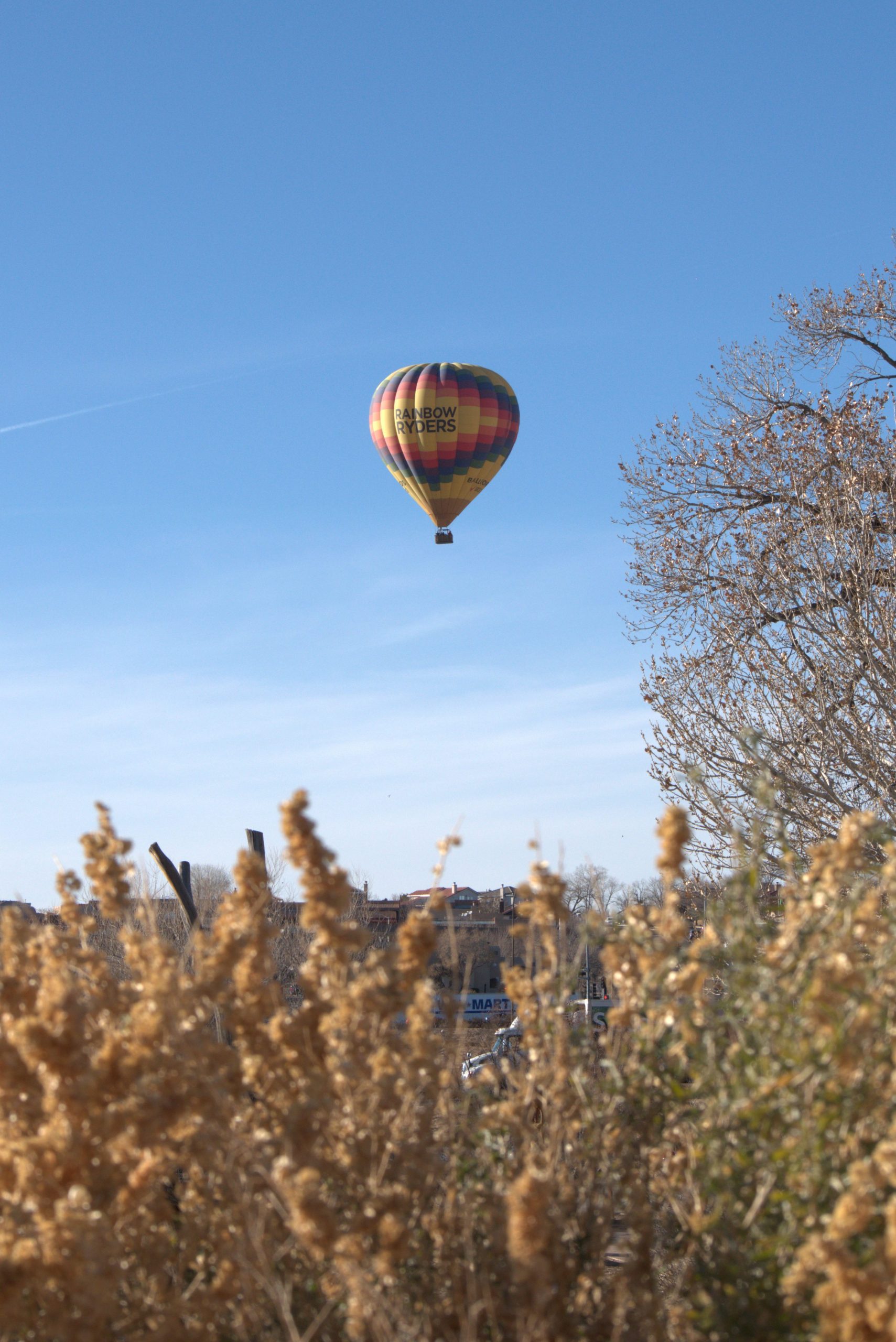Geese are bigger waterfowl than ducks. Geese average about 6.5 pounds and 30 inches lengthwise. There is a slight size difference in males in relation to females, however both genders appear identical. In regards to roosting geese are quite vocal. They generally cling to larger flocks than ducks. Typically geese flocks are family groups.
A form of geese is the Cackling Goose. This is a small to medium proportioned goose that has a mottled grayish brown anatomy with black legs, neck, tail, and head, with a white beard like chin strap stretching from one ear to the other ear. A white rump bandlike design is also an identifying indicator. The bill is triangular and smaller in size. Geese eat a various plant species and parts, especially sedges, grasses, grains and berries. Also geese have strong deep wing flaps.
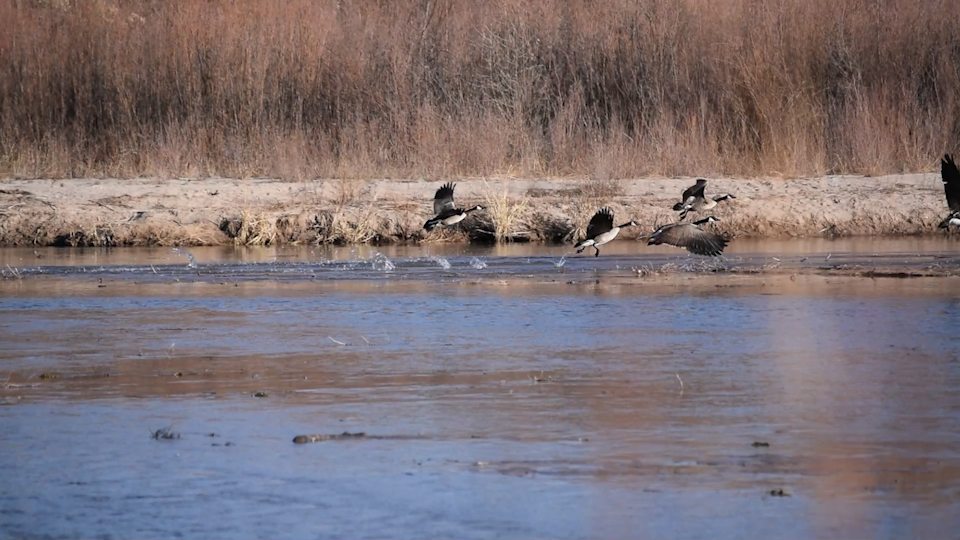
Canada Geese are known for a V-shaped migration. These flocks of geese can be seen flying overheard. There are numerous subspecies of geese that vary in stature and calls. Mostly forage in flocks, grazing while trekking the land but they will also feed by submerging in water. Usually only submerging head and neck. They have adapted well to being around humans, favoring the areas around public ponds or golf courses. This has caused them to be seen as a nuisance in some parts. Canada Geese can mate for life. The female chooses the site, typically on slightly elevated dry land near water, meanwhile the male defends their nesting territory. The geese nest consists of a shallow bowl surrounded with sticks and various vegetation that is designed with a slight depression. The young are navigated away from the nest a day or so after hatching. They feed themselves from that point on but are assisted by both parents until their first flight, typically at 7 to 9 weeks after hatching.
Geese migrate to warmer climates during the winter season. If a goose becomes injured during their migration, a fellow goose will leave the migrating flock to accompany its fallen comrade. The goose will accompany the injured until the other goose is healed or until its last breath.
Foraging sparrows hop on the ground through brush and grasses. Sparrows have an array of food that they like to feast on. Typically sparrows feed on: insects, fruit, grains, and seeds. Sparrows are known to roost about a couple miles from where they feed at. When it comes to feeding their young they primarily feed on insects.
For nesting, sparrows nest on or within various trees with various nesting materials. However, sparrows can be drawn to dwell in manmade infrastructure because of typically larger housing for nests and the greater accessibility to food. Male sparrows defend their nesting areas by singing.
This sparrow is described as having a streaky brown with gray wings and a tail with rusty edges, muscular abdominals with black strikes, white stomach area, a mustache stripe bordered by slender brown lines, dark eye rings, and a black and brown stripped crown with a central gray stripe. Also the head can look crested when the crown feathers are raised. This kind of sparrow is known as Lincoln’s sparrow which apart of the Emberizidae family species. This type of sparrow is rarely seen in flocks and thus is solitary and highly secretive.
To the ancient Egyptians, sparrows would grasp the spirits of recently deceased Egyptians and carry them to the afterlife. Ancient Egyptians used a specified hieroglyph that represented the house sparrow. It was used to signify the words “narrow,” “small,” or “bad.” In years to come, it became popular for sailors to seek sparrow tattoos in hopes that sparrows would catch their spirits if they were deceased at sea.
To the Ancient Greeks sparrows were seen as a symbol of love. Sparrows were the sacred bird of Aphrodite which was the goddess of love, and symbolized pure love and a spiritual connection, which was not just lust. However, sparrows are often referred to as one of the most sexually active birds in nature. In ancient Troy, nine sparrows were consumed by a snake, and this prophesized nine years of war.
Ducks can be divided into 2 general categories. There is a unique size difference between drakes and hens. Drakes refer to male ducks and hens refer to female ducks. Typically drakes are more colorful than hens of which tend to be of a spotted and mixed coloration.
A form of duck is known as a Stiff Tailed duck. This type of duck is described by long stiff tail feathers, which are raised when the bird is resting. Also they have a long and puffy bill. Their legs are set back further on their body which makes walking on the land difficult. This type of duck hardly leaves the water.
Also called Dabbling ducks or Puddle ducks feed by bobbing their head underneath their water source. They prefer smaller, shallow bodies of water with nearby cover. Physically their legs protrude from the middle of their belly outward. These ducks swim tail and are high above the water’s surface. At a moment’s notice they can spring into the air for a take off. These Puddle ducks more likely than diver ducks tend to feed in agricultural fields because they walk and run well on land.
Another category of ducks are called Diving ducks and they feed by diving completely underwater. These ducks prefer a large, open, deep body of water and usually swim towards the middle of their water source. From a physicality stand point their legs exit by the rear of their body. They can be identified by swimming with their tail close to the water. These type of ducks are presumed to “walk” along the water’s surface before take off.


